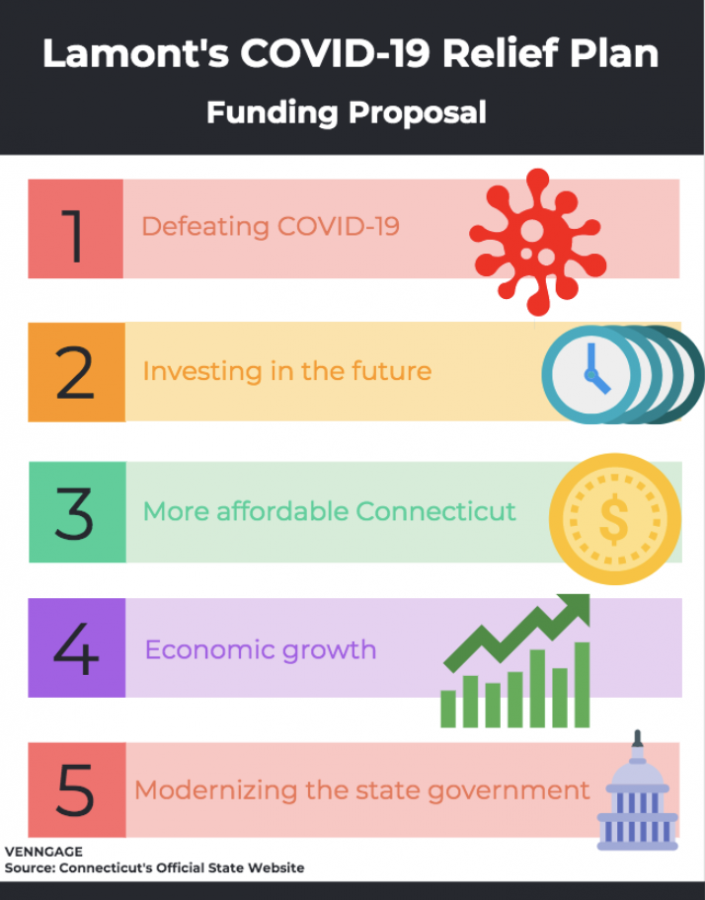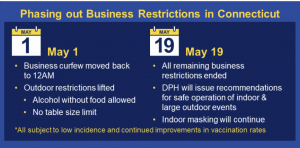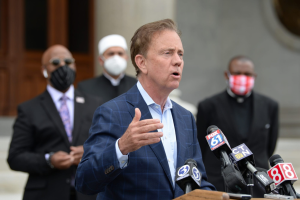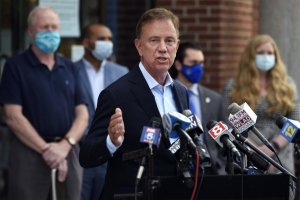Lamont introduces new COVID-19 relief plan
Infographic by Gabriella Gerig ’23
The COVID-19 relief plan money will be allocated into five different sections of investment. More specific information can be found on Connecticut’s Official State Website.
Governor Ned Lamont released his proposal for the allocation of COVID-19 federal recovery funding on April 26. Lamont’s vision for the future of the state will target both recovery and governmental support. His main goals listed on Connecticut’s Official State Website are to overcome COVID-19, invest in the future, create a more affordable Connecticut, address the economic consequences of the pandemic and modernize the state government.
“It sounds good on paper,” Daniela Garcia ’23 said. “I am just hoping it follows through and gets help to those who it’s targeting.”
Connecticut will receive $6 billion of COVID-19 recovery aid that originates from the American Rescue Plan Act of 2021, a $1.9 trillion federal stimulus package designed to combat the effects of COVID-19.
“We want to make sure it’s not just money, but investments that make a difference in people’s lives, especially those that were hardest hit by this pandemic,” Lamont said according to WSHU Public Radio.
Lamont’s COVID-19 recovery plan hopes to create new job opportunities and launch an attack on poverty, while supporting climate change and racial equality efforts. Connecticut’s money will be used to turn the state towards healthy and equitable rehabilitation.
“The funds due to arrive in Connecticut through the American Rescue Plan Act represent an incredible opportunity for this state to make transformative investments to emerge healthier and stronger,” Lamont said. “This is a unique moment for Connecticut, and by maximizing the utility of these resources, we can continue putting our state on an upward trajectory for the remainder of the pandemic, the recovery and into the future.”
According to the CT Mirror, Lamont’s plan will focus on the $2.65 billion that can be enacted with little restrictions. The governor is planning on employing two-thirds of these funds to alleviate the economy without raising taxes. Other assistance funding will be allotted to child care and mental health services, cities and towns, elementary and secondary school districts and affordable housing initiatives.
This relief plan is intended to be an extensive step to rebound from the pandemic and return to normalcy. However, there is a concern that this plan might not be as effective as it needs to be and might not fulfill its full purpose.




















































